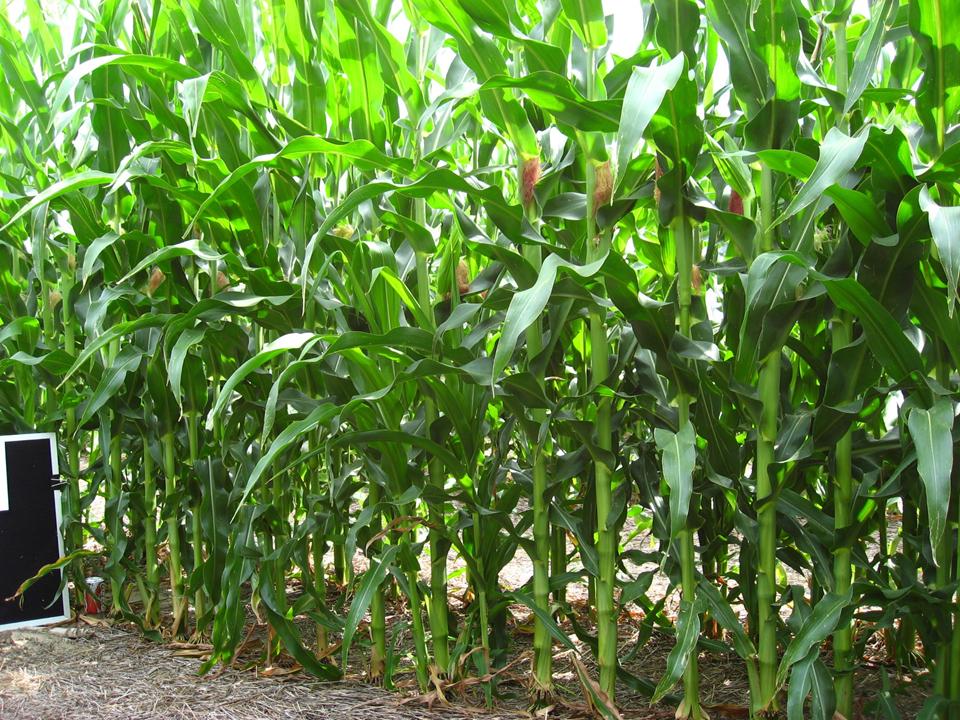
Recommendations for Implementing and Fertilizing Skip-Row Planting
UNL Research Shows Yield Benefits of Skip-Row Planting in Dryland Corn
Read more about what Nebraska researchers found when testing various skip-row planting scenarios in corn in western Nebraska in this companion article in CropWatch.
To maximize dryland corn yields following wheat with no-till skip-row planting in Nebraska, remember:
- Use a stripper head to harvest the wheat.
- If a platform head is used, cut the wheat high to maximize stubble height, leaving 15-18 inches or more of standing stubble. Missing one average wheat head, which has 22 kernels per square foot, would reduce harvested yield by about one bushel per acre; whle research has shown that leaving a taller stubble will significantly increase yield of the following crop. Many lower heads have only 7 to 15 kernels, and in many cases, it would take two or more heads per square foot to equal one bushel. A Kansas State University study found a two bushel increase in corn yield for every inch of height increase in wheat stubble from 7.5 to 15 inches. Taller stubble traps more snow and takes much longer to disintegrate in the field than straw that has gone through the combine.
- Spread the straw and chaff uniformly.
- Spray wheat stubble shortly after harvest to control weeds.
- Do not harvest ecofallow corn for silage if you intend to plant corn in the same field next year. Residue is critical to conserve moisture. Also, don't cut the corn for silage if you plan to fallow the ground the next year and seed winter wheat in the fall.
Crop insurance is now available in some Nebraska counties for skip-row planted corn. If you're planning to plant skip-row corn, be sure to check your crop insurance options.
Fertilize Appropriately
- Fertilize according to your yield goal.
- Apply nitrogen over the entire area. Use UAN solution with pre-plant herbicides or apply urea before planting. The earlier it's applied, the better. Later applications (urea, UAN, or anhydrous ammonia) may not receive sufficient rainfall to move nitrogen into the root zone where the crop will be obtaining its water. A nutrient must be in soil solution to be taken up by the plant.
- Anhydrous ammonia application is also discouraged because the knives can increase evaporation loss from the soil and “plant” weed seeds.
Practice Skip-row Planting Correctly
- Follow the recommendations listed for growing ecofallow corn.
- Select Bt, Roundup-Ready hybrids that perform well under both ideal and stressful situations.
- Typically, on a 30-inch row system, two rows are planted and two rows are skipped. For higher rainfall areas and/or fields with large amounts of crop residue and a full soil water profile, the plant two, skip one configuration may be the better choice. Also, the plant two, skip one may be a better choice in short season areas and where corn does not get tall.
- Plant appropriate plant populations: 10,000 to 13,000 plants per acre in western Nebraska. On a plant two, skip two system, this translates to 20,000 to 26,000 plants per acre in the planted rows, but since every row is an outside row, reduce populations by 20%. If you normally plant a population of 12,000 in conventional no-till fields, that would compare with 24,000 in a plant two, skip-row system. Reduce that by 20% (4,800) to 19,000 plants in the two rows that are planted. In eastern Nebraska and in limited irrigation and/or where water may not be available later in the season, consider the plant two, skip one system and plant about 19,400 seeds per acre. (This is about 29,000 in the two planted rows if you are trying for 150 bu/ac corn.) The benefits of skip-row include corn yields that do not decrease (and may even increase) under high plant populations and low soil water conditions, unlike with solid planting.
- Select hybrids with flex ears.
- It usually works best to fill the outside seed box on each end of the planter, and skip the appropriate boxes from there.
- Apply a pre-plant or pre-emergence herbicide treatment.
- Spray glyphosate postemergence tank-mixed with additional effective herbicides, as needed, to control weeds. Always consult and follow the pesticide label.
Online Master of Science in Agronomy
With a focus on industry applications and research, the online program is designed with maximum flexibility for today's working professionals.
